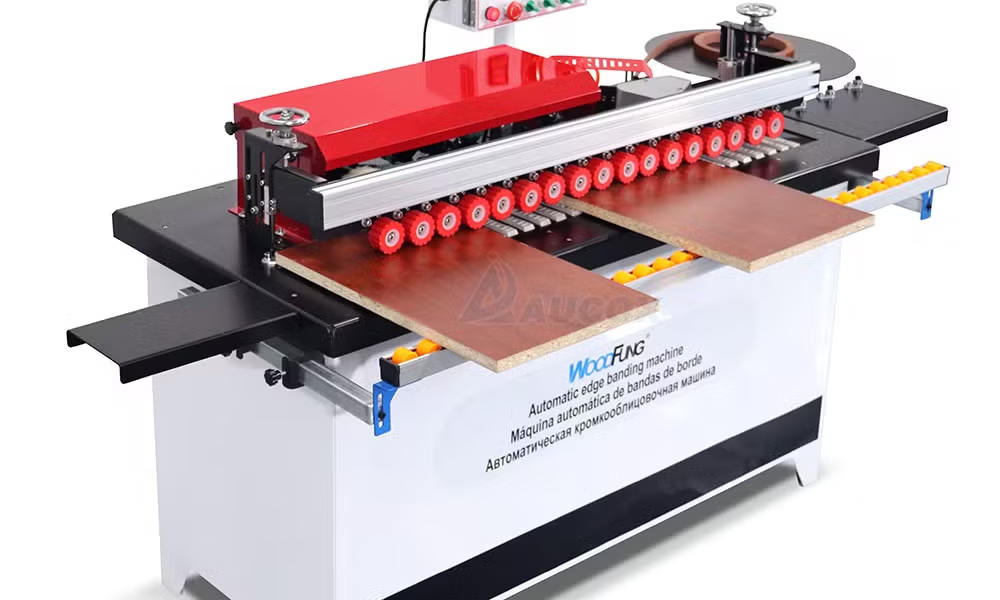An Edge Banding Machine is an essential tool in modern woodworking and furniture manufacturing, used to apply a finished edge to panels and boards for a polished, professional look. Whether you’re running a large production line or a small woodworking shop, proper maintenance of your Edge Banding Machine is key to ensuring consistent performance, high-quality output, and long equipment life. Neglecting maintenance can lead to breakdowns, production delays, and costly repairs. In this article, we’ll explore comprehensive maintenance tips to keep your Edge Banding Machine in optimal condition for years to come.
Importance of Regular Maintenance for an Edge Banding Machine
Regular maintenance is not just about avoiding breakdowns—it’s about maintaining precision and efficiency. An Edge Banding Machine operates with complex components such as glue pots, rollers, cutters, and trimming units. Each of these parts must function perfectly for seamless edge banding. Dust accumulation, adhesive residue, and misaligned parts can quickly degrade performance. Consistent care ensures smooth operations, reduces downtime, and extends the overall life of the machine.
Daily Maintenance Tasks to Keep Your Edge Banding Machine Running Smoothly
Daily maintenance should become a habit for every operator. At the end of each shift, take time to inspect and clean the machine thoroughly. Remove sawdust, glue residues, and small debris that may have accumulated throughout the day. Pay special attention to the glue pot and rollers, as they are most prone to build-up. Check the glue temperature and ensure it’s within the manufacturer’s recommended range—overheating can burn the glue, while low temperatures may cause poor bonding. Wipe down sensors and guide rails, and apply light lubrication where necessary to prevent friction.
Weekly Maintenance Checklist for an Edge Banding Machine
Weekly maintenance involves more in-depth inspection and adjustments. Check the alignment of the pressure rollers and trimming units to ensure the edges are being applied evenly. Misalignment can lead to uneven gluing and visible gaps on finished panels. Inspect the glue pot filter and replace it if it’s clogged, as poor glue circulation can affect bonding quality. Check the belts, bearings, and motors for signs of wear or vibration. Tighten any loose screws or bolts that could cause instability during operation. Test the air pressure levels in pneumatic systems, as incorrect pressure can lead to uneven feeding or edge banding slippage.
Monthly Preventive Maintenance for Optimal Performance
Monthly maintenance ensures that your Edge Banding Machine stays calibrated and performs at factory standards. Check the trimming and scraping tools for sharpness. Dull tools can damage the edges and cause splintering, leading to rework. Clean the glue application roller thoroughly with a non-abrasive cleaner to remove hardened glue. Inspect the electrical components, including cables, switches, and connections, for any signs of wear or corrosion. Verify that all safety systems, such as emergency stops and safety guards, are functioning correctly. It’s also a good time to calibrate sensors to maintain cutting precision.
Keeping the Glue System in Perfect Condition
The glue system is the heart of any Edge Banding Machine. To maintain consistent adhesion, always use high-quality glue recommended by the manufacturer. Avoid mixing different types of glue, as this can cause contamination and inconsistent bonding. Clean the glue pot daily and drain unused glue if the machine will not be used for an extended period. Over time, glue residues can carbonize inside the pot, reducing efficiency. Using a specialized cleaning agent for EVA or PUR glue systems can prevent clogging and extend the lifespan of your glue pot and rollers.
Lubrication and Mechanical Care
Proper lubrication is critical for the moving parts of your Edge Banding Machine. Without it, friction can cause premature wear on bearings, chains, and rollers. Follow the manufacturer’s lubrication schedule and use the recommended type of oil or grease. Over-lubricating can attract dust, while under-lubricating increases mechanical wear. Pay attention to the chain drive, feed track, and trimming units. A well-lubricated machine not only operates quietly but also consumes less energy and runs more efficiently.
Cleaning the Dust Extraction System
An efficient dust extraction system plays a major role in the smooth operation of an Edge Banding Machine. Dust and debris can accumulate quickly in woodworking environments, clogging sensors, rollers, and the glue application system. Clean the dust extraction filters regularly and check the suction hoses for blockages. A clean dust system not only improves machine efficiency but also ensures operator safety by reducing the risk of fire hazards from accumulated dust particles.
Blade and Cutter Maintenance
The trimming and cutting units are responsible for the final finishing of the edge, and their condition directly affects product quality. Dull or damaged blades can leave rough or uneven edges. Inspect the blades and cutters frequently and replace them when necessary. Using high-quality, sharp cutting tools reduces strain on the Edge Banding Machine’s motor and ensures smooth, precise finishing. Always store spare blades in a dry, safe place to avoid corrosion.
Checking Electrical and Pneumatic Systems
Both electrical and pneumatic systems need regular attention. For electrical maintenance, inspect all cables, connectors, and sensors for wear or damage. Faulty wiring can cause short circuits and production downtime. For pneumatic systems, check air hoses for leaks and ensure that the air compressor provides clean, dry air to avoid moisture damage. Replace air filters periodically to maintain consistent pressure and operation.
Training and Operator Awareness
Even the best-maintained Edge Banding Machine can underperform if operated incorrectly. Ensure that all operators are well-trained in both machine operation and maintenance routines. Regularly review safety protocols and encourage a culture of responsibility. Operators should understand how to detect early signs of wear, unusual sounds, or irregular movements. Proper handling minimizes the risk of damage and ensures consistent results.
Importance of Using Genuine Spare Parts
When replacements are needed, always use genuine spare parts supplied by the manufacturer. Counterfeit or low-quality components might fit initially but can lead to long-term damage and reduced efficiency. Genuine parts ensure compatibility, safety, and reliable performance. Keep a stock of critical components such as glue filters, rollers, and blades to minimize downtime during replacements.
Scheduling Professional Servicing
While daily and monthly maintenance can be handled in-house, professional servicing should not be ignored. Schedule a full inspection by an authorized technician at least once or twice a year. They can identify hidden issues, perform calibrations, and replace worn components before they fail. Regular servicing helps your Edge Banding Machine stay efficient and minimizes the risk of unexpected breakdowns.
Conclusion
Maintaining an Edge Banding Machine properly is an investment in your workshop’s productivity and profitability. Regular cleaning, lubrication, alignment, and timely part replacement ensure that your machine performs at its best for years. Operators should follow daily, weekly, and monthly maintenance schedules and use high-quality glue and genuine spare parts. By staying proactive and disciplined with maintenance, you not only prevent costly downtime but also guarantee precise and professional results on every panel. An efficiently maintained Edge Banding Machine is the backbone of a successful woodworking operation, combining durability, consistency, and exceptional performance.




